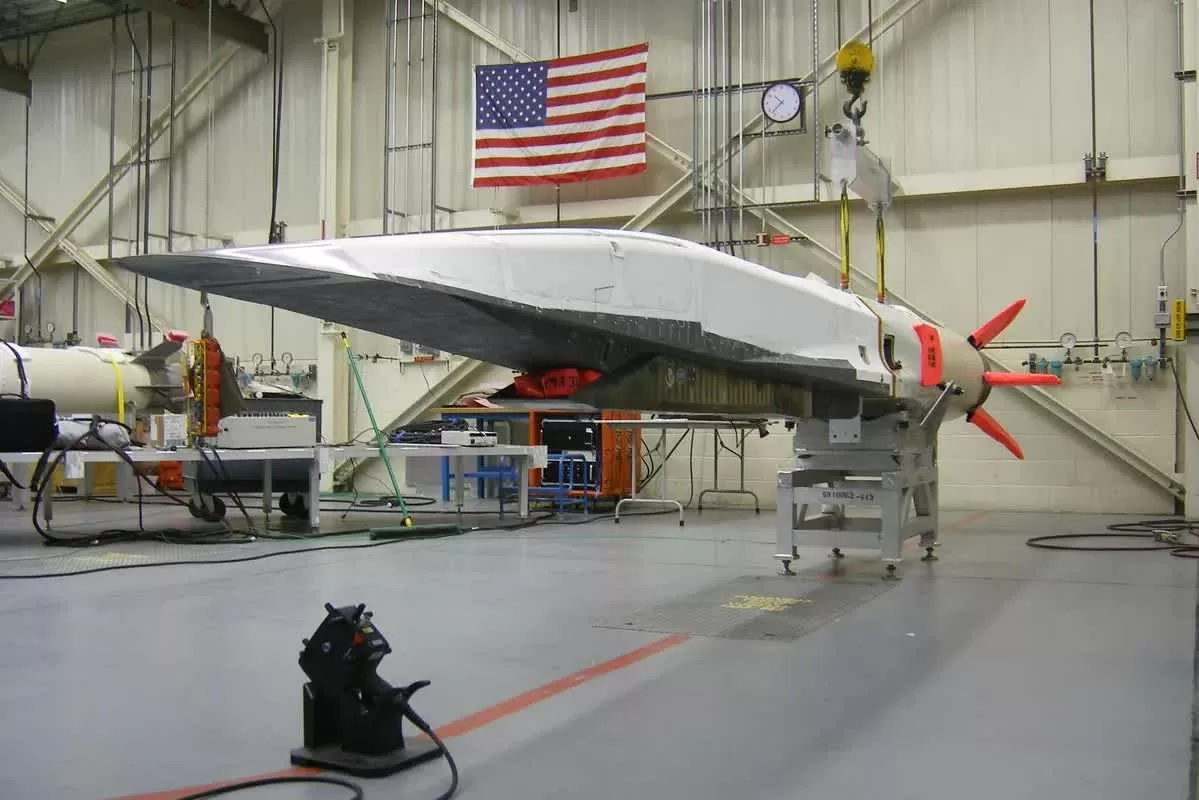Delayed, technologically deficient and lacking a clear strategy, the US hypersonic weapons program is clearly lagging behind China and Russia.
 |
| The US hypersonic weapons program seems unable to take off. (Source: X) |
Hypersonic weapons promise game-changing combat capabilities, but the US military is plagued by unresolved technological flaws, operational performance gaps and strategic risks in the field.
Many challenges arise
In February, the US Congressional Research Service (CRS) released a report saying that although Washington has stepped up efforts to develop hypersonic weapons, many important questions remain about their performance in real-world situations.
While rivals Russia and China are believed to have deployed hypersonic glide vehicles (HGVs), the US has focused on conventional weapons systems that require greater precision and more advanced technology. However, no US hypersonic weapons systems have reached full operational status and prototypes are still being evaluated.
In the United States, some still question the need for these weapons given their undefined mission roles and high costs.
Meanwhile, advances by rivals in hypersonic technology raise concerns about eroding America's position.
Despite a significant increase in Washington’s budget for hypersonic research to $6.9 billion in fiscal year 2025, issues around detection, defense, and broad-based protection against hypersonic threats remain unresolved. Current U.S. missile defense systems are ill-equipped to counter hypersonic threats, as the weapons are designed to evade conventional tracking and interception methods.
Analysts debate the usefulness of these investments, while the US Congress must balance enhancing hypersonic strike and defense capabilities against growing threats from adversaries.
This ambiguity complicates the US Department of Defense's strategic calculus, requiring new arms control measures or risk mitigation strategies.
At the tactical level
Author Andreas Schmidt mentioned in a 2024 Military Review article that hypersonic weapons offer significant advantages through high speed, maneuverability, and survivability because they can reach speeds in excess of Mach 5, minimizing the reaction time of enemy defense systems and reducing the likelihood of interception.
Hypersonic weapons can also evade exoatmospheric missile defense systems by operating in the atmosphere at altitudes of 20-60 km and can perform reactive and planned maneuvers to avoid interceptors while still delivering fast and precise impacts.
However, in an article on Defense One in January 2022, author Joshua Pollack mentioned that US hypersonic weapons tests often fail due to overstretched development schedules and incomplete technology.
The article points out that the US Department of Defense’s rush to prototype and test these weapons has led to poor design, inadequate testing, and inadequate oversight. Failed tests involving the US Army’s AGM-183 Air-Launched Rapid Response Weapon (ARRW) and Long Range Hypersonic Weapon (LRHW), along with a test canceled in March 2023 due to battery issues, highlight these challenges.
Despite the obstacles, authors Francis Mahon and Punch Moulton argued in a January 2025 article that adopting a “fail fast” approach is crucial to U.S. missile dominance. This approach involves rapid testing, learning from failures, and iterative improvement, as well as accelerating innovation and technological progress. Frequent testing and failure allow the U.S. to quickly adapt and improve its hypersonic capabilities, ensuring it stays ahead of peer competitors like China and Russia.
Even as the US accelerates its hypersonic weapons program, authors David Wright and Cameron Tracy note in a March 2024 article in the Bulletin of the Atomic Scientists that challenges accuracy and communications disruption during flight. The article argues that these issues could damage sensitive electronics and affect targeting systems. The high drag of low-altitude flight could also slow hypersonic weapons, making them easier targets for missile defense systems.
Meanwhile, the high cost of hypersonic weapons does not warrant their tactical utility, argues Shawn Rostker in an article for RealClear Defense . Mr. Rostker said that cruise missiles or unmanned aerial vehicles (UAVs) are sufficient for many missions.
At the military operational level
The United States must integrate hypersonic missiles to counter anti-access/area denial (A2/AD) strategies and ensure command and control resilience against enemy intervention.
In a January 2025 RealClear Defense article, Mahon and Moulton argued that hypersonic missiles are effective against A2/AD approaches because they can disrupt and disable integrated air defense systems from a distance and overcome long-range anti-ship systems, providing greater freedom of operation for the US Air Force and Navy.
However, expert Heather Penney assessed in an article in Air & Space Forces magazine in May 2023 that the US 'kill chain' (the steps needed to detect and attack a target) is vulnerable due to its dependence on interconnected components.
China has developed the means to jam networks/sensors and defeat weapons at the terminal stage of an attack, potentially disrupting the “kill chain” at every step.
At the strategic level
The United States must assess the need for nuclear-armed hypersonic weapons for strategic deterrence against advanced missile defense systems, while managing the risks of miscalculation and arms race escalation.
Although the United States is currently focused on conventionally armed hypersonic weapons, author Stephen Reny in an article in the 2020 Strategic Studies Quarterly argues that the United States may consider nuclear-armed hypersonic weapons necessary to counter advanced ballistic missile defense (BMD) systems and restore a credible “second-strike” capability to the modernizing nuclear arsenals of China and Russia. According to author Stephen Reny, nuclear-armed hypersonic weapons can overcome missile defense systems, ensure a credible retaliatory capability, and maintain global deterrence stability.
However, authors Shannon Bugos and Kingston Reif argued in a September 2021 Arms Control Association (ACA) report that hypersonic weapons challenge strategic security stability by increasing the risk of escalation and an arms race.
The speed and maneuverability of hypersonic weapons reduce reaction times, complicate threat assessment, and increase the likelihood of miscalculation. They can create risks through target and warhead ambiguity, with dual-warhead strikes potentially being mistaken for nuclear strikes.
The stalled hypersonic weapons program is leaving the US behind in the race with its rivals. Can Washington overcome the challenges and catch up?
More than an arms race, hypersonic weapons competition is shaping geopolitical competition today, and the United States must decide whether to accelerate, recalibrate, or rethink its approach before it is too late.
Source: https://baoquocte.vn/my-dang-hut-hoi-trong-cuoc-dua-vu-khi-sieu-thanh-voi-trung-quoc-va-nga-304327.html


























Comment (0)